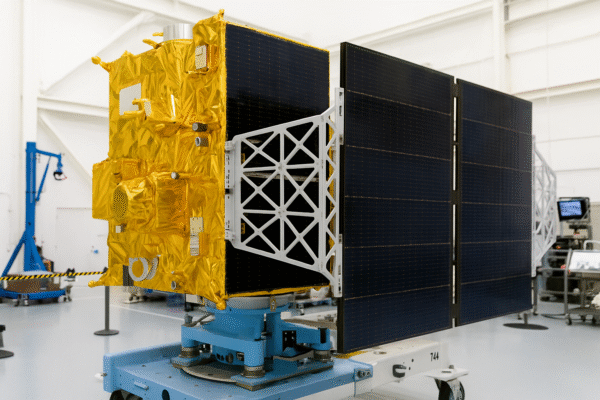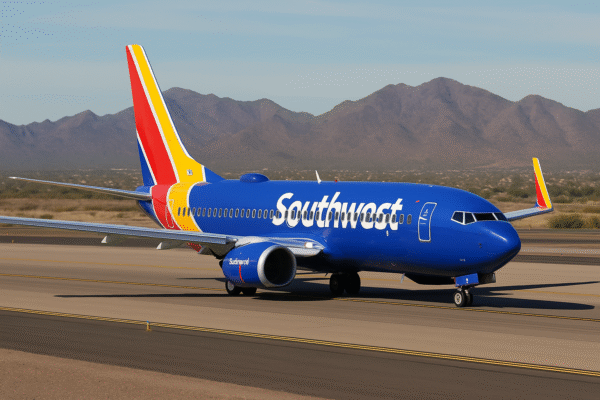In early 2026, Southwest Airlines will officially launch its first-ever intrastate flight in Arizona, connecting Phoenix and Tucson with a direct route. This announcement marks a milestone in regional aviation, as the short but strategic route is set to enhance both convenience for local travelers and connectivity to international destinations.
For decades, Tucson residents have relied heavily on long highway drives to access the vast network of flights offered at Phoenix Sky Harbor International Airport. With Southwest’s new direct service, this burden will be lifted, creating faster, more comfortable, and more efficient travel opportunities.
Connecting Two Arizona Hubs
The Phoenix–Tucson route will take under an hour, offering a seamless alternative to the often congested two-hour drive along Interstate 10. While the flight may not be aimed solely at passengers traveling between the two cities, its strategic purpose lies in acting as a bridge for Tucson residents seeking connections through Phoenix’s world-class hub.
Phoenix Sky Harbor, one of the busiest airports in the United States, serves as a gateway to hundreds of domestic and international destinations. By linking Tucson International Airport with Sky Harbor, Southwest Airlines strengthens Arizona’s role as a regional and global travel center.
Benefits for Passengers
For travelers in southern Arizona, the advantages of the new service go beyond just convenience. Tucson International Airport is known for its relaxed environment, shorter security lines, and lower parking costs, with daily rates starting around $5—compared to Phoenix’s higher fees that range from $10 to over $30 per day.
By taking advantage of this new route, passengers can bypass the stress of driving through traffic, while still enjoying the broad travel options available at Sky Harbor. Business travelers, in particular, are expected to benefit, as the route allows them to save valuable time when connecting to cross-country or international flights. Leisure travelers, too, will appreciate the easier access to vacation destinations without the hassle of a lengthy commute.
Balancing Cost and Value
The projected round-trip ticket price for the Phoenix–Tucson flight is approximately $301, which is higher than the cost of driving between the two cities. For many travelers, particularly those on a budget, driving may still remain the preferred option.
However, when considering the broader travel experience, the cost of flying becomes more justifiable. For passengers with tight schedules or long onward journeys, the time saved and stress avoided can outweigh the added expense. The route is particularly valuable for those catching international flights, where missing a connection could mean costly delays.
The Rise of Short-Haul Flights
The Phoenix–Tucson connection reflects a growing trend in the aviation industry: the expansion of short-haul flights that feed passengers into major hubs. Known as “feeder” or “bank” flights, these services are designed to maximize efficiency by connecting regional airports to larger ones during peak travel hours.
For airlines, short-haul flights strengthen their operational networks, ensuring planes are filled and routes remain profitable. For passengers, they simplify travel, reducing the need for long drives or complex itineraries. This strategy has already proven successful in many parts of the country, and Arizona’s new intrastate link is expected to become a model for future growth.
Wider Impacts on Arizona and Beyond
The introduction of this new route is more than just a convenience—it carries broader economic and social implications. Tucson’s enhanced access to Phoenix’s global flight network could stimulate tourism, business travel, and economic growth in southern Arizona. For local communities, the service could attract more visitors and provide greater exposure for the region’s cultural, educational, and commercial opportunities.
On a statewide level, the move demonstrates how regional airports like Tucson International are becoming increasingly important players in the broader air travel ecosystem. By easing congestion at major hubs and creating more accessible entry points for travelers, these airports contribute to a more balanced and efficient aviation system.
The Future of Regional Connectivity
Looking ahead, the Phoenix–Tucson route may pave the way for more short-haul flights across the United States. As passenger demand grows for faster, more convenient options, airlines are expected to introduce additional services linking smaller cities with major hubs.
For Arizona, the new service represents more than a direct connection between two cities—it symbolizes a future where regional connectivity supports global accessibility. As Southwest Airlines expands its presence, Arizona residents will enjoy greater choices, improved convenience, and smoother travel experiences.
Conclusion
Southwest Airlines’ decision to launch direct flights between Phoenix and Tucson in 2026 highlights the airline’s commitment to improving travel convenience while strengthening Arizona’s role as a gateway to the world. While the cost of flying may be higher than driving, the value lies in saved time, easier access, and stress-free connections.
As short-haul flights continue to grow in importance, this new route reflects a larger transformation in how airlines and passengers view regional travel. For Tucson residents, it means greater access to Phoenix Sky Harbor’s expansive network. For Arizona as a whole, it marks a step toward smarter, more efficient air travel that connects communities, supports economic growth, and opens new doors to the world.
For more travel news like this, keep reading Global Travel Wire












